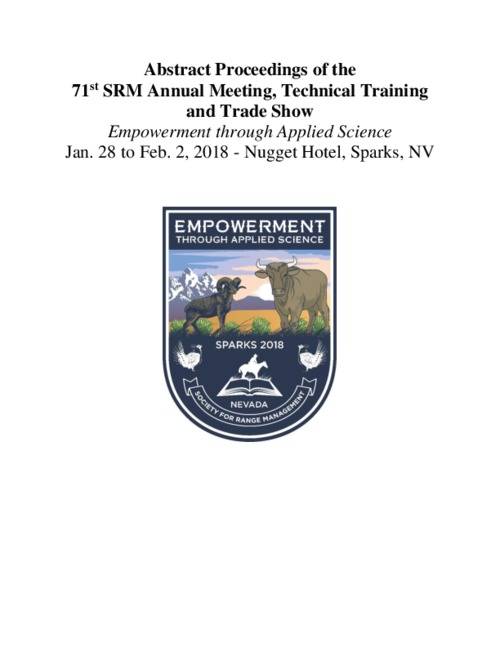Location
The Society for Range Management is the professional scientific society and conservation organization whose members are concerned with studying, conserving, managing and sustaining the varied resources of the rangelands which comprise nearly half the land in the world. Established in 1948, SRM has over 4,000 members in 48 countries, including many developing nations.
SRM’s members are land managers, scientists, educators, students, producers and conservationists–a diverse membership guided by a professional code of ethics and unified by a strong land ethic.
MISSION
Providing leadership for the Stewardship of Rangelands based on sound ecological principles.
VISION
A well-trained and highly motivated group of professionals and rangeland users working with productive, sustainable rangeland ecosystems.
Members:
Resources
Displaying 1 - 5 of 26Response of arid rangelands to deferred grazing in Southern Tunisia
Rangelands in north Africa and the near east in general provide numerous goods and services that have great economic, social, cultural, and biological values. For centuries, inhabitants of rangelands have engineered pastoral and farming systems that have sustained their livelihoods in these harsh and dry environments. Unfortunately, these rangelands have undergone profound socio-economic changes where traditional grazing systems (transhumance and nomadism) which had historically allowed for grazing deferment were abandoned.
Mapping and Monitoring Cheatgrass Dieoff in Rangelands of the Northern Great Basin, USA ☆,☆☆,★
Understanding cheatgrass (Bromus tectorum) dynamics in the Northern Great Basin rangelands, USA, is necessary to effectively manage the region's lands. This study's goal was to map and monitor cheatgrass performance to identify where and when cheatgrass dieoff occurred in the Northern Great Basin and to discover how this phenomenon was affected by climatic, topographic, and edaphic variables. We also examined how fire affected cheatgrass performance.
Demographic Changes Drive Woody Plant Cover Trends—An Example from the Great Plains☆
Woody plant encroachment—the conversion of grasslands to woodlands—continues to transform rangelands worldwide, yet its causes and consequences remain poorly understood. Despite this being a coupled human-ecological phenomenon, research to date has tended toward ecological aspects of the issue. In this paper, we provide new insight into the long-term relationships between human demographics and woody plant cover at the landscape scale.
China's Rangeland Management Policy Debates: What Have We Learned?☆
In China, three major rangeland management policies have caused dramatic social, economic, and ecological changes for pastoral regions in the past 30 yr: the Rangeland Household Contract Policy (RHCP), Rangeland Ecological Construction Projects (RECPs), and the Nomad Settlement Policy (NSP). The impacts of these policies are greatly debated. In this paper, we conduct a systematic review of academic perspectives on the impacts of the three policies and the causes of ineffective and negative effects.
Alternative Rangeland Management Strategy in an Agro-Pastoral Area in Western China☆
Governance plays a key role in rangeland management. In China, all rangeland, including pastoral land and agro-pastoral land, is owned by the State. Since 1980, use rights have been granted to households by the Chinese government extending the household contract responsibility system (HCRS). But in the agro-pastoral areas of northwestern (NW) China, the rangeland degradation is more severe than that in pastoral areas. The HCRS is difficult to implement because the limited and fragmented grazing land cannot be contracted to individual households.



